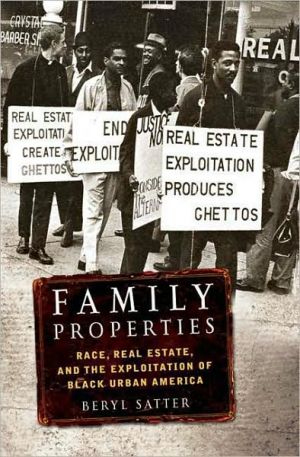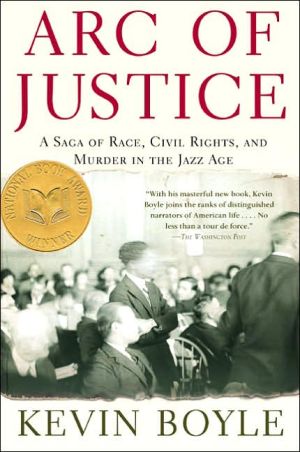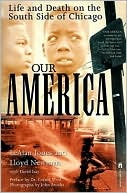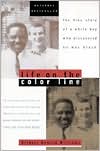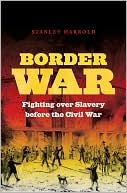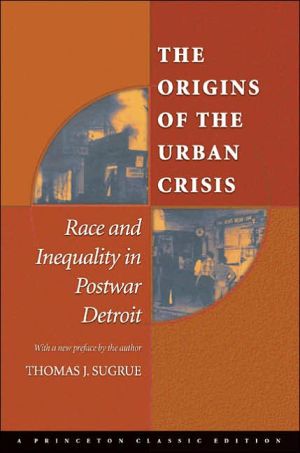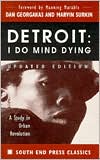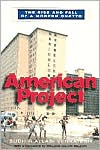Family Properties: Race, Real Estate, and the Exploitation of Black Urban America
Part family story and part urban history, a landmark investigation of segregation and urban decay in Chicago—and cities across the nation\ The "promised land" for thousands of Southern blacks, postwar Chicago quickly became the most segregated city in the North, the site of the nation’s worst ghettos and the target of Martin Luther King Jr.’s first campaign beyond the South. In this powerful book, Beryl Satter identifies the true causes of the city’s black slums and the ruin of urban...
Search in google:
Part family story and part urban history, a landmark investigation of segregation and urban decay in Chicago—and cities across the nationThe "promised land" for thousands of Southern blacks, postwar Chicago quickly became the most segregated city in the North, the site of the nation’s worst ghettos and the target of Martin Luther King Jr.’s first campaign beyond the South. In this powerful book, Beryl Satter identifies the true causes of the city’s black slums and the ruin of urban neighborhoods throughout the country: not, as some have argued, black pathology, the culture of poverty, or white flight, but a widespread and institutionalized system of legal and financial exploitation. In Satter’s riveting account of a city in crisis, unscrupulous lawyers, slumlords, and speculators are pitched against religious reformers, community organizers, and an impassioned attorney who launched a crusade against the profiteers—the author’s father, Mark J. Satter. At the heart of the struggle stand the black migrants who, having left the South with its legacy of sharecropping, suddenly find themselves caught in a new kind of debt peonage. Satter shows the interlocking forces at work in their oppression: the discriminatory practices of the banking industry; the federal policies that created the country’s shameful "dual housing market"; the economic anxieties that fueled white violence; and the tempting profits to be made by preying on the city’s most vulnerable population. A monumental work of history, this tale of racism and real estate, politics and finance, will forever change our understanding of the forces that transformed urban America.The New York Times - Dwight GarnerThe historian and the storyteller in Ms. Satter are never at war with each other. Family Properties is so packed with the horrors visited upon black families in Chicago from the 1940s through the 1970s that you will want to walk outside every 15 pages or so and simply scream in outrage. Yet her tone throughout is dispassionate. She is at heart a historian, not a memoirist. And she is a vertiginously good one. Her book is transfixing from its first sentence…the pleasures here are deep and resonant ones. Family Properties feels like something close to an instant classic.
Introduction The Story of My Father 11 Jewish Lawndale 172 The Noose around Black Chicago 363 Justice in Chicago 644 Reform - Illinois-Style 1005 The Liberal Moment and the Death of a Radical 1336 King in Chicago 1697 The Story of a Building 2158 Organizing Lawndale 2339 The Big Holdout 27210 The Federal Trials 320Conclusion 372Notes 385Acknowledgments 471Index 475
\ From the Publisher"Beryl Satter's Family Properties is really an incredible book. It is, by far, the best book I've ever read on the relationship between blacks and Jews. That's because it hones in on the relationship between one specific black community and one specific Jewish community and thus revels in the particular humanity of all its actors. In going small, it ultimately goes big."\ —Ta-Nehisi Coates, The Atlantic\ “This is rich material… Satter balances personal stories, including moments of great bravery, with painstaking legal and historical research. Family Properties is transfixing from the first sentence. The pleasures here are deep and resonate ones… an instant classic.”\ —Dwight Garner, The New York Times “Satter’s painstaking thorough portrayal of the human costs of financial racism is the most important book yet written on the black freedom struggle in the urban North. Family Properties is a superbly revealing and often gripping book.”\ —David Garrow, The Washington Post “Beryl Satter has taken the hard road to glory in her study of race and housing discrimination in Chicago during the 1950s and ‘60s. Yet somehow she has managed to stay on course, using her considerable investigative skills and unwavering sense of fairness to write a revealing and instructive book… A cautionary tale of government complicity, Family Properties follows the social historian’s dictum of “asking big questions in small places.” It reminds us that history and memory are essential tools for anyone pondering our current predicament.”\ —The New York Times Book Review “This sweeping chronicle of greed and racism combines a noble and tragic family history with a painful account of big city segregation and courageous acts of community resistance. In riveting stories and thoughtful analysis, Satter powerfully discloses how manipulation and abuse shattered lives and deepened urban inequality.”\ —Ira Katznelson, author of When Affirmative Action Was White: An Untold Story of Racial Inequality in Twentieth-Century America “Beryl Satter brings Chicago’s West Side to life in this vivid history of a neighborhood fighting for survival. She gives the urban crisis a human face in unforgettable portraits of the slumlords and the activists and lawyers (including her father) who battled valiantly against them.”\ —Thomas J. Sugrue, author of Sweet Land of Liberty: The Forgotten Struggle for Civil Rights in the North “This history of a place called Lawndale, on the west side of Chicago, is an archetypal American story of struggle and rise, race and divisiveness, justice denied and then justice achieved. Clyde Ross, Ruth Wells, Mark J. Satter, Monsignor Egan, Jack Macnamara, and the others—these are American heroes. I was privileged to be briefly involved, and I'm so glad to see Family Properties, after all these years, that I could hoot with joy, and then weep.”\ —David Quammen, author of Song of the Dodo: Island Biogeography in an Age of Extinction\ “This is how the story of urban America after the Second World War ought to be written, with gritty realism and no illusions. Here is urban history as a drama of moral conflict and religious passion. Family Properties is a searing and deeply moving work, by a loving daughter and a great historian.”\ —Robert Orsi, Professor of Religion and History, Northwestern University “One of the most contentious issues of twentieth century America was the transformation of middle-class white neighborhoods into African-American slums. The cast of characters is familiar—unscrupulous realtors, heartless slumlords, promiscuous welfare mothers, rapacious drug dealers, corrupt politicians, discriminatory savings and loan associations, and a racist government. But Beryl Satter tells a different story, a nuanced story, and a personal story in this compelling re-examination of a phenomenon everyone knows about and no one understands. Family Properties will change the way you think about history and about causation.”\ —Kenneth T. Jackson, Barzun Professor of History, Columbia University\ \ \ \ \ \ David J. Garrow…a penetrating examination of the financial discrimination that thousands of African Americans encountered in their northward migration to cities such as Chicago…Family Properties is a superbly revealing and often gripping book\ —The Washington Post\ \ \ Dwight GarnerThe historian and the storyteller in Ms. Satter are never at war with each other. Family Properties is so packed with the horrors visited upon black families in Chicago from the 1940s through the 1970s that you will want to walk outside every 15 pages or so and simply scream in outrage. Yet her tone throughout is dispassionate. She is at heart a historian, not a memoirist. And she is a vertiginously good one. Her book is transfixing from its first sentence…the pleasures here are deep and resonant ones. Family Properties feels like something close to an instant classic.\ —The New York Times\ \ \ \ \ Raymond ArsenaultHistorians who write about close friends or relatives do so at their peril. Personal engagement, so essential to the memoir, can confound historical judgment and scholarly detachment, especially when family honor hangs in the balance…Yet somehow [Satter] has managed to stay on course, using her considerable investigative skills and unwavering sense of fairness to write a revealing and instructive book…A cautionary tale of governmental complicity, Family Properties follows the social historian's dictum of "asking big questions in small places." It reminds us that history and memory are essential tools for anyone pondering our current predicament.\ —The New York Times Book Review\ \ \ \ \ Publishers WeeklyIn the early 1950s, Mark Satter opened his law practice in the Chicago suburb of Lawndale, but his life's work really began in 1957, the day a black couple, Albert and Sallie Bolton, walked through his doors needing a stay on an eviction from a home they had just purchased. Satter uncovered a citywide scheme, in which landlords sold African-Americans overpriced homes, keeping the titles until black homeowners paid them off, while charging excessive interest rates to insure they never could. Called "contract selling," the practice cost thousands of migrating blacks their livelihoods. Mark Satter died of a heart condition eight years after the Boltons crossed his threshold, but nearly 50 years later, his daughter, Beryl, a history professor at Rutgers, picked up where he left off. Setting out to prove that the decline of black neighborhoods into slums had nothing to do with the absence of African-American resources and everything to do with subjugation and greed, Satter draws on her father's records to piece together a thoughtful and very personal account of the exploitation that kept blacks segregated and impoverished. (Mar.)\ Copyright © Reed Business Information, a division of Reed Elsevier Inc. All rights reserved.\ \ \ \ \ Kirkus ReviewsAn engrossing look at the history of racist real-estate practices in Chicago, and the activists who fought for justice. Satter (History/Rutgers Univ.; Each Mind a Kingdom: American Women, Sexual Purity, and the New Thought Movement, 1875-1920, 1999) views this issue through the personal lens of family history. Her father was a civil-rights attorney who represented many black families against exploitative real-estate contracts in the 1950s and '60s. Taking advantage of the fact that few banks would give mortgages to African-Americans, owners pushed a scheme called "contract selling," which was basically a high-interest installment plan with exorbitant monthly payments. The houses were often in disrepair and grossly overpriced; initial down payments were massive. One late monthly payment allowed the owner to void the contract, evict the tenants and start the process anew with another family. Even if they managed to stay afloat financially, black families often had to contend with hostile, even violent, white neighbors. Satter writes of one chilling case in 1957, when a mob of 200 teenagers gathered outside an African-American homeowner's house, chanting, "We want blood." When they sought redress in the courts, plaintiffs often met opposition from openly racist judges. Subsequent chapters depict the campaigns for social justice that arose from these practices. The author profiles Chicago activists like community organizer Saul Alinsky, who organized pickets against landlords, and movements such as the Contract Buyers League, which in the late '60s and early '70s spearheaded payment strikes and successfully challenged the legality of Illinois's eviction law. Much of the book's second halfchronicles serpentine courtroom struggles; it's a testament to Satter's skill that these sections are among the most riveting and at times read like a legal thriller. Many of the problems and injustices she writes about still exist today, and she does an excellent job of documenting and explaining them for the lay reader. Comprehensive and compulsively readable.\ \
